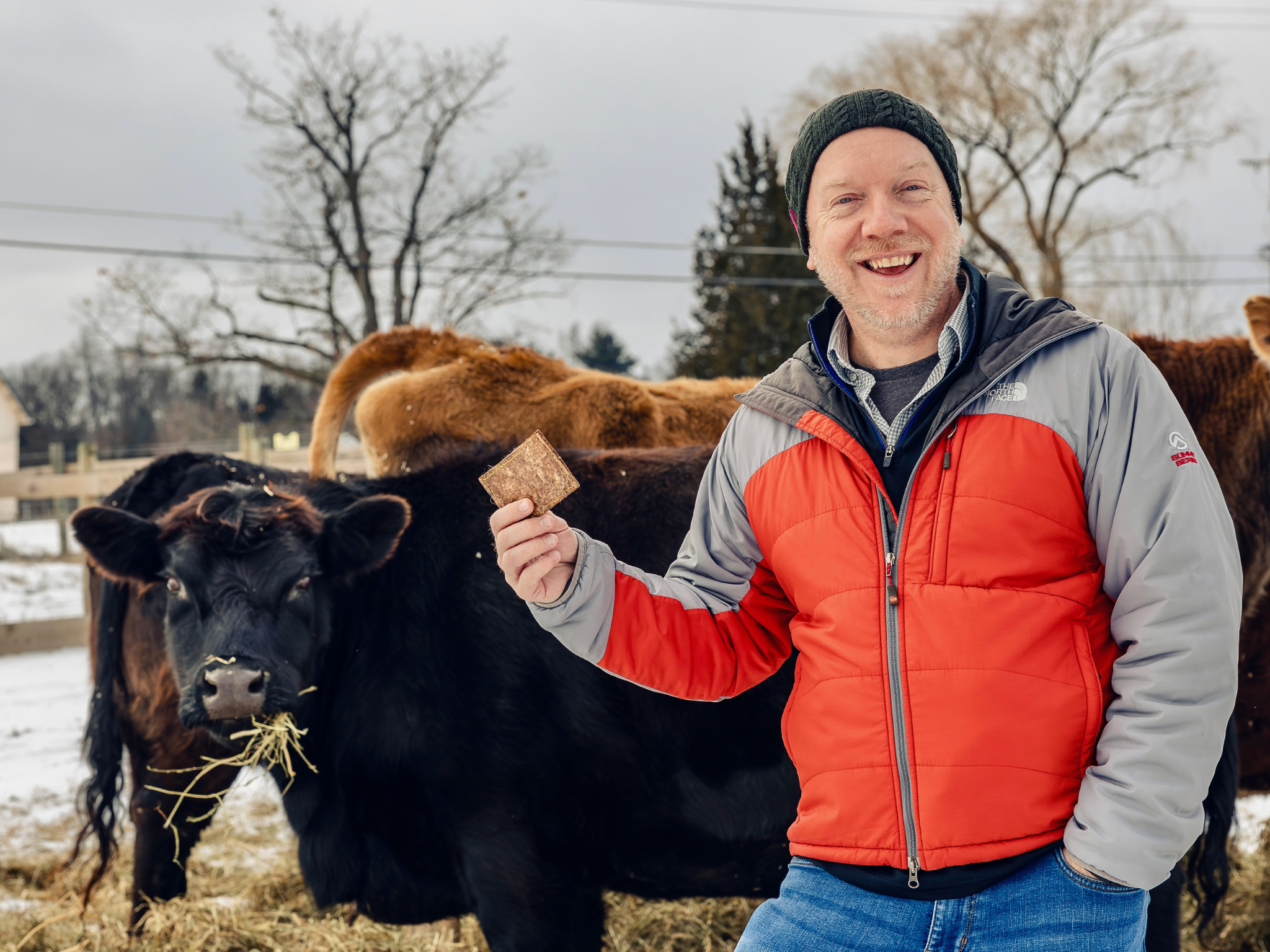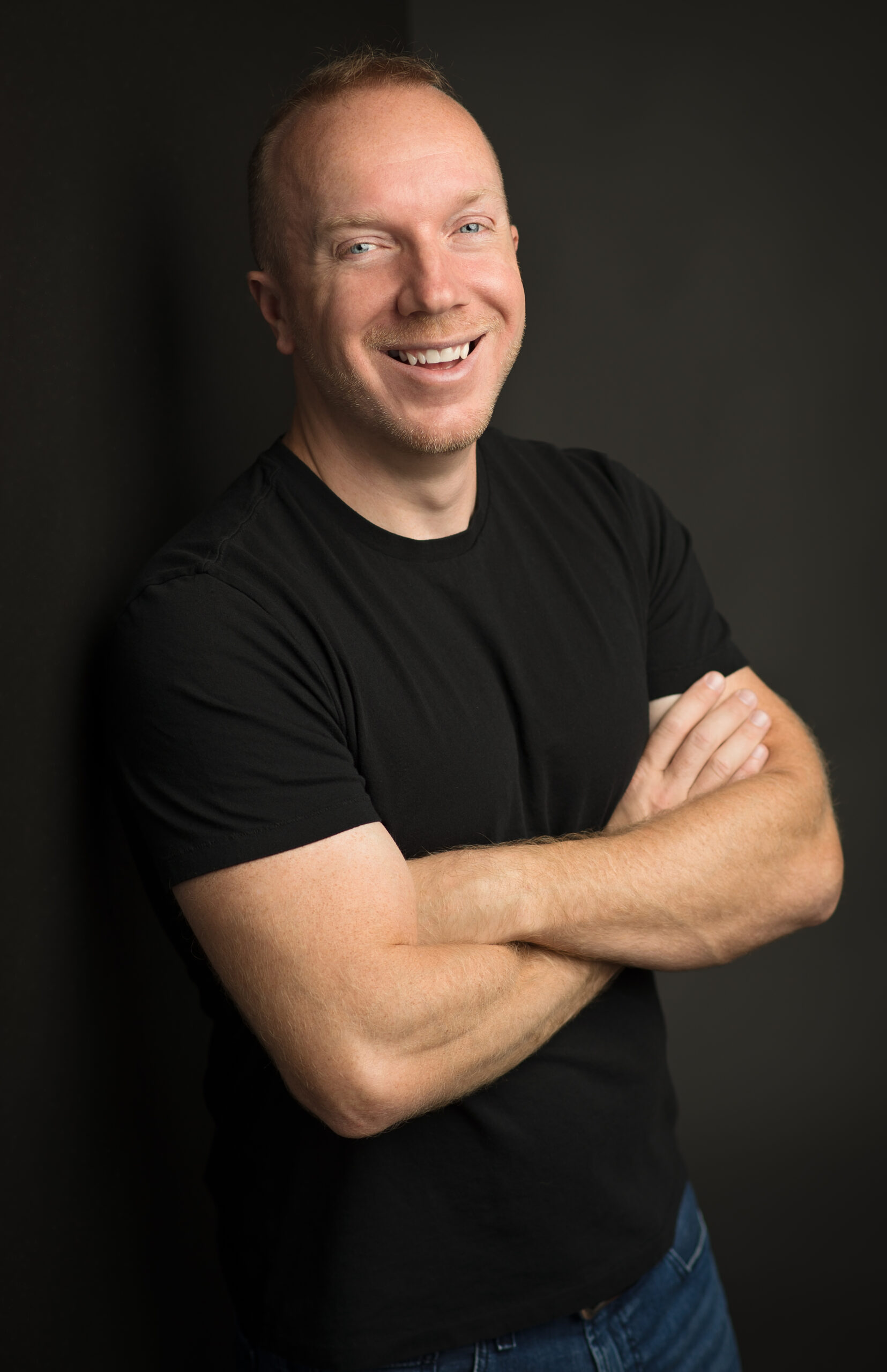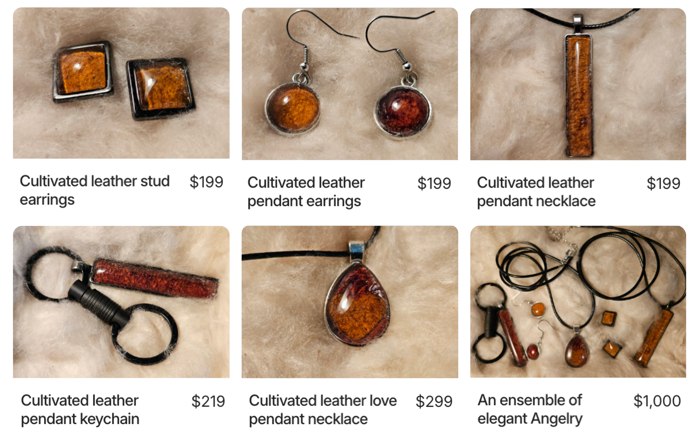
US biotech startup Cultivated Biomaterials has created Angelry, a line of jewellery made with the cultivated leather from the cells of a sanctuary-grazing cow.
Beef may be the cattle industry’s climate Achilles’ heel, but its environmental impact extends beyond food. Cows are the source of leather, one of fashion’s most revered – and most problematic – materials.
Advocates of leather have long argued that it is a byproduct of meat and dairy production, but critics counter that the material should more accurately be viewed as a co-product. In many cases, it is the primary product, and manufacturing it is an energy– and water-intensive process linked to deforestation and biodiversity loss.
Producing a square metre of leather generates 110kg of CO2e, much higher than synthetic and plant-based alternatives. Moreover, animal-derived leather releases lots of health-harming chemicals during tanning.
However, most first-generation vegan leather products use petroleum-derived plastic, which can take up to 500 years to break down and shed microplastics that harm marine life, the waterways, and our health.
For a new crop of companies, the optimal solution lies with cellular agriculture. By using cells from living cows and cultivating them in fermentation tanks, they can produce truly sustainable leather without all the climate and animal welfare questions hanging over it. Some firms have claimed that cell-based leather generates 90% fewer CO2 emissions and 95% less waste, and needs 80% less water to produce.
Joining that crop of innovators is Cultivated Biomaterials, a startup based in Raleigh, North Carolina. It has created the world’s first line of lab-grown leather jewellery, called Angelry, and will next month begin a crowdfunding drive on Kickstarter to bring its products to the market.
“The goal of our upcoming Kickstarter campaign is to raise non-dilutive funds to produce and ship our first cultivated leather jewellery products, while continuing to optimise our processes,” founder and CEO George Engelmayr tells Green Queen.
How Cultivated Biomaterials makes its lab-grown leather

Engelmayr is the former CSO of cultivated pork startup Mission Barns, and has worked at cultivated chicken leader Upside Foods and lab-grown leather firm VitroLabs (which was acquired by competitor Faircraft this year).
“I’ve been conducting tissue-engineering research directed towards growing strong collagenous tissues for 25 years,” he says. “In particular, I’ve worked on a variety of soft tissue applications, such as heart valves for children with congenital heart lesions, cardiac muscle for myocardial infarction, skeletal muscle for volumetric muscle loss and dystrophies, and blood vessels for dialysis access and trauma.”
Many of those same composition-structure-function relationships apply to skin, and, therefore, cultivated leather. “For example, bioprosthetic heart valve leaflets are essentially chemically stabilised sheets of collagen, just like leather,” he explains.
Cultivated Biomaterials’s process is based on the tissue engineering approaches pioneered in the early 1990s by one of Engelmayr’s postdoctoral advisors at MIT, Prof Robert Langer. The ‘top-down’ process involves four principal components: cells, scaffolds, culture media, and bioreactors.
“Regarding cells, our process has been differentiated from that of others from the very outset. Specifically, we are growing cultivated leather harmlessly from the skin cells of a living, sanctuary-grazing cow named Angel,” he says. The cow lives at Sweet Farm sanctuary in New York.
“Our novel, patent-pending plant-based scaffolds are unique in that they are sustainably derived from intrinsically hydrophobic, windborne seed hairs. Like the clock of the dandelion plant (which I’ve used to make cultivated bacon), the seed hairs of the kapok tree, milkweed plant and others are notoriously difficult to wet with water,” he outlines.
“As described in our patent application, we developed a novel, entirely plant-based solution to this challenge. We use amphiphilic sunflower lecithin to render these seed hairs hydrophilic, thereby enabling them to be seeded with cells.”
Engelmayr described having 100% animal-free culture media (so, minus fetal bovine serum) as “absolutely essential” to the startup. “We are working with UK-based Multus Biotechnology on our fully animal-free culture media components,” he reveals.
“The development of novel bioreactors leveraging biophysical stimulation to elicit cell proliferation, differentiation, and maturation has been a running theme throughout my career. Our cultivated leather bioreactor designs continue to evolve, always keeping front and centre the goals of minimising capex, maximising scalability, and simplifying process flow,” he adds.
How is cell-based leather different from cultivated meat?

Animal-derived leather can release lots of health-harming chemicals during tanning, an issue Cultivated Biomaterials is also addressing. “We tan and finish our cultivated leather using a natural, vegetable-based tanning (veg-tan) process. No animal products are ever used in our tanning, fatliquoring, dying, or finishing our cultivated leather,” says Engelmayr.
But aside from the tanning, the startup’s tissue engineering approach is entirely compatible with cultivated meat production. “A difference in our implementation for cultivated leather is that instead of muscle cells, we use dermal fibroblasts harmlessly isolated from Angel,” he explains, adding that its novel plant-based scaffolds are compatible with muscle cells.
“Unlike cultivated meat, bringing cultivated leather to market does not require regulatory approval, nor does it require any shifts in consumer sentiment towards novel foods,” he says. “And cost considerations are not as critical initially for high-end market entry. Cultivated leather simply needs to stand on its own as a beautiful, novel luxury material.”
Expanding on this, Engelmayr highlights that the startup isn’t aiming to be cost-competitive with conventional leather in the near term, nor does he view price parity as an appropriate target.
“I feel targeting price parity with conventional leather devalues what we’re creating here. Indeed, I see the extraordinary confluence of advanced tissue-engineering technologies and Angel’s cells as the birth of a truly novel, exotic luxury material,” he explains.
“As we scale and optimise, costs will naturally come down. But our goal is not to compete head-on with any species of conventional leather, but rather to offer designers and consumers an exciting high-tech option for high-end luxury goods,” he says. “Our cultivated leather… has never existed on Earth before. I feel it should be valued as such.”
Cultivated Biomaterials is currently producing the leather by hand at bench scale. “Our current scale is adequate for making our cultivated leather jewellery, and it is modular, so it can be scaled as needed for small goods,” its founder says. “We are taking a more organic approach to growth, wherein we are not seeking to raise venture capital.”
Cultivated Biomaterials bets on crowdfunding and ‘smaller, simpler’ goods

Speaking of which, Engelmayr believes the VC model demands that lab-grown leather must achieve price parity, and quickly: “As a tissue engineer with 25+ years’ experience, I am not confident that cultivated leather of any sort will reach price parity with the most prevalent conventional leather in the near term.”
Venture capital for climate tech has diminished over the last couple of years, and cell cultivation companies have felt the squeeze. In the cultivated leather world, Modern Meadow pivoted away from the technology to instead focus on a plant-based version, while VitroLabs ended up being acquired by Faircraft.
This is why Cultivated Biomaterials is opting to take the crowdfunding route. “With Kickstarter, we don’t need to concern ourselves with valuations, term sheets, or cap tables. The more we raise from generous backers who are excited by our mission and cultivated leather, the faster we can optimise and scale,” says Engelmayr.
“Our target raise from Kickstarter is as high as possible,” he adds. “To date, the most funding a Kickstarter project has ever raised was over $46M. Our campaign will officially launch on Tuesday, September 9 and will last 60 days.”
The company’s next steps include fashion partnerships and possibly another Kickstarter for its next line of products. For now, it aims to circumvent the fledgling sector’s challenges by focusing on jewellery, which requires “significantly smaller quantities” of cell-based leather.
These products allow the startup to showcase the material “beautifully in settings, almost like the biological equivalent of a gemstone”, notes Engelmayr. “Jewellery is also more forgiving than bags when it comes to strength and durability.”
That doesn’t mean items like bags or shoes are a no-go for the firm. “But we will first optimise the strength and durability of our cultivated leather in the setting of smaller and simpler luxury goods, such as cardholders,” he says.
“Our novel plant-based scaffolds and veg-tanned cultivated leather do not benefit from the reinforcing effects of synthetic plastics, either internally or in external finishes. Hence, we will focus on optimising tissue composition and structure so that we can ensure strength and durability are achieved while upholding our commitment to a truly sustainable and harmless offering.”
Aside from Cultivated Biomaterials, startups working with cell-based leather include Faircraft, Lab-Grown Leather, 3D Bio-Tissues, Qorium and Pelagen.
The post This Startup Has Created the World’s First Lab-Grown Leather Jewellery appeared first on Green Queen.
This post was originally published on Green Queen.